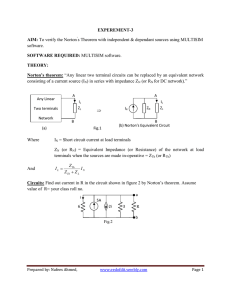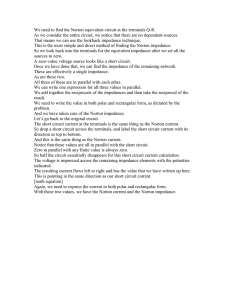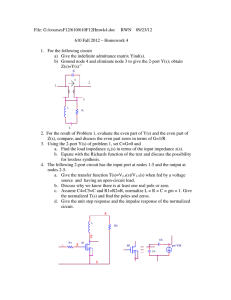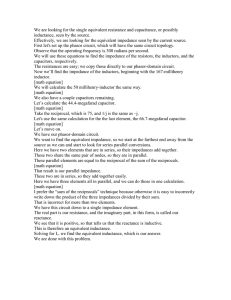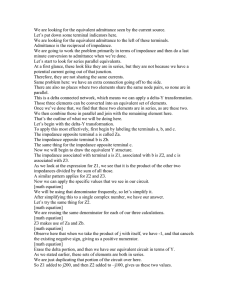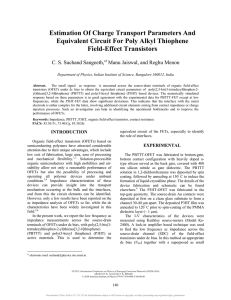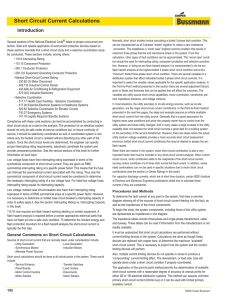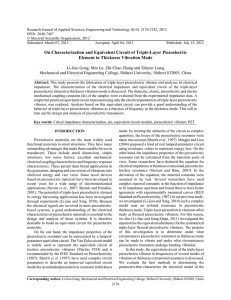We wish to find the Norton equivalent circuit at the... As you look over the entire circuit, you notice there...
advertisement
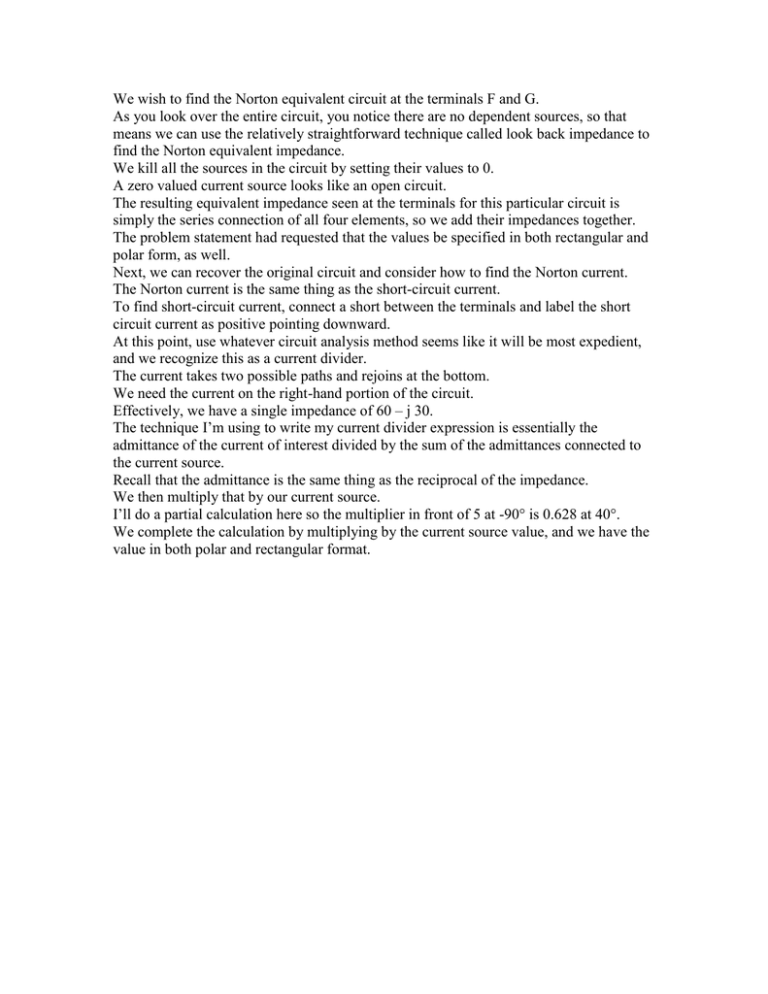
We wish to find the Norton equivalent circuit at the terminals F and G. As you look over the entire circuit, you notice there are no dependent sources, so that means we can use the relatively straightforward technique called look back impedance to find the Norton equivalent impedance. We kill all the sources in the circuit by setting their values to 0. A zero valued current source looks like an open circuit. The resulting equivalent impedance seen at the terminals for this particular circuit is simply the series connection of all four elements, so we add their impedances together. The problem statement had requested that the values be specified in both rectangular and polar form, as well. Next, we can recover the original circuit and consider how to find the Norton current. The Norton current is the same thing as the short-circuit current. To find short-circuit current, connect a short between the terminals and label the short circuit current as positive pointing downward. At this point, use whatever circuit analysis method seems like it will be most expedient, and we recognize this as a current divider. The current takes two possible paths and rejoins at the bottom. We need the current on the right-hand portion of the circuit. Effectively, we have a single impedance of 60 – j 30. The technique I’m using to write my current divider expression is essentially the admittance of the current of interest divided by the sum of the admittances connected to the current source. Recall that the admittance is the same thing as the reciprocal of the impedance. We then multiply that by our current source. I’ll do a partial calculation here so the multiplier in front of 5 at -90° is 0.628 at 40°. We complete the calculation by multiplying by the current source value, and we have the value in both polar and rectangular format.

